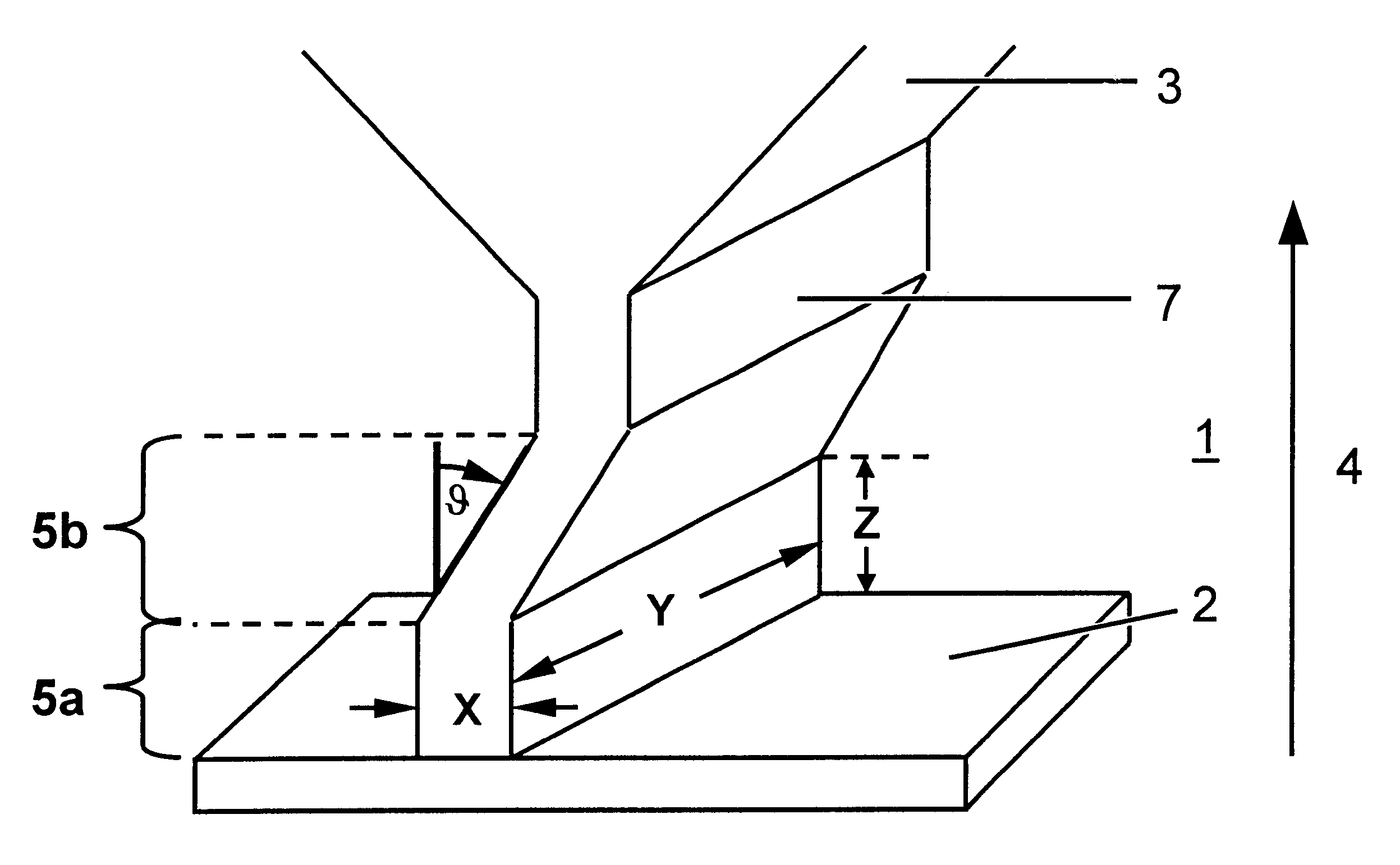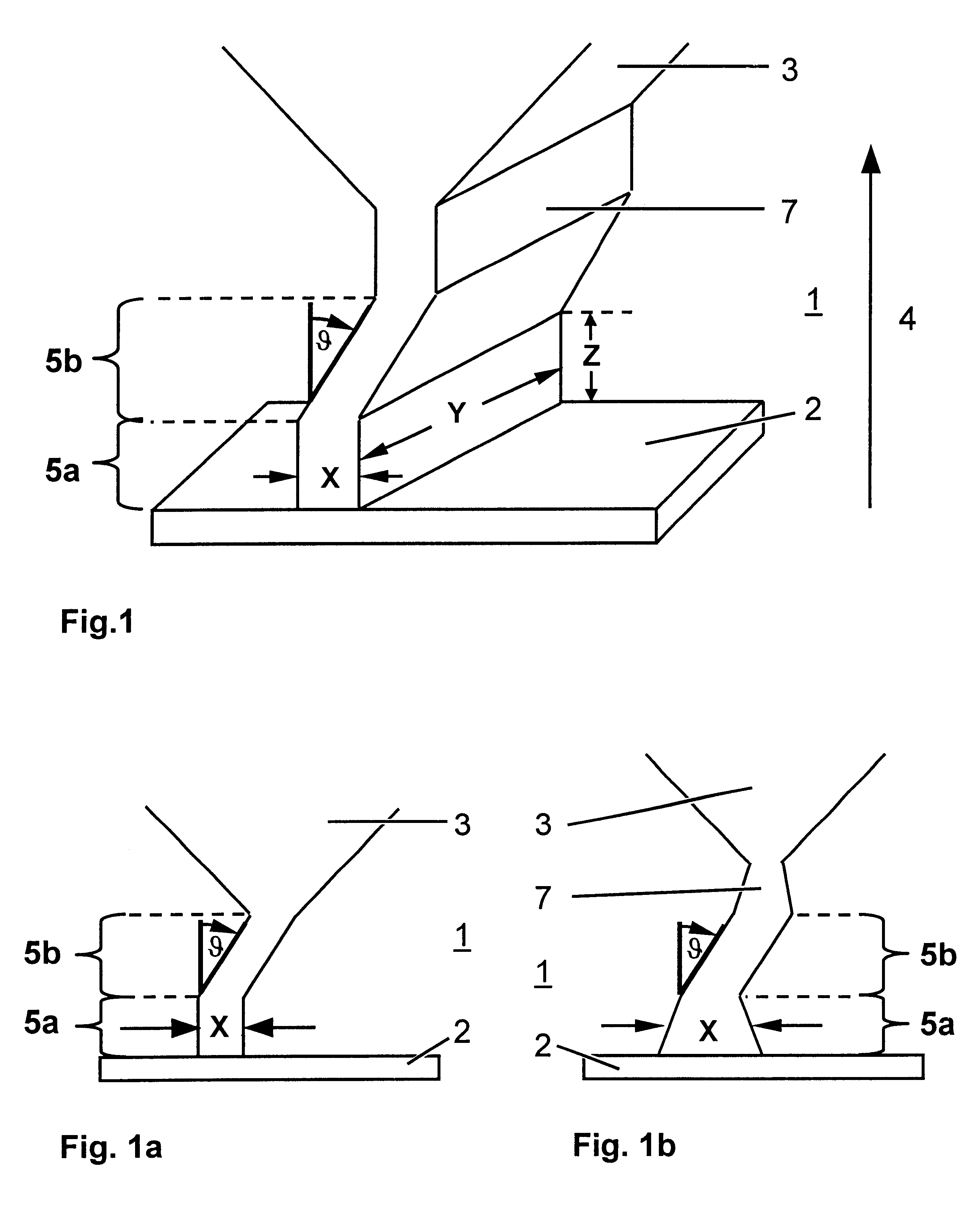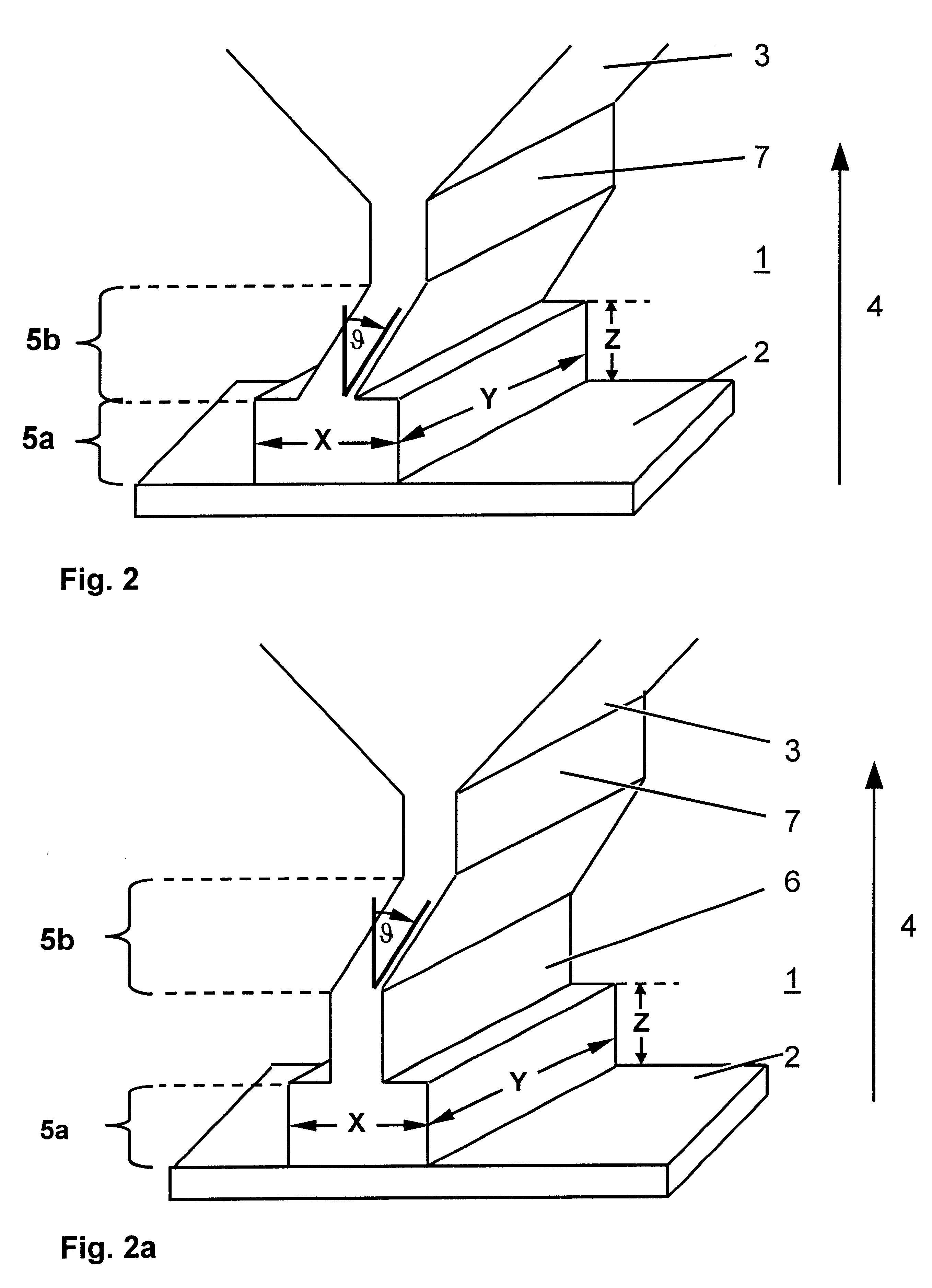Method for manufacture of a directionally solidified columnar grained article
a columnar grained article and directionally solidified technology, applied in the direction of crystal growth process, polycrystalline material growth, chemistry apparatus and processes, etc., can solve the problems of increasing the furnace time required to cast the part, increasing the cost, and difficult to reuse, so as to reduce the secondary misorientation of the columnar grained article, reduce the cost of incremental production, and strong transverse properties
- Summary
- Abstract
- Description
- Claims
- Application Information
AI Technical Summary
Benefits of technology
Problems solved by technology
Method used
Image
Examples
first embodiment
FIG. 1 shows a first embodiment according the invention. A selector section 1 on a cooling plate 2 is shown. The selector section 1 is divided into two stages, the primary selector section 5a and the secondary selector section 5b. The primary selector section 5a of the selector section 1, which is rectangular in cross section in this embodiment and has the dimensions thickness X, length Y and height Z, selects out during solidification those dendrites most favorably oriented with respect to the growth direction 4 but still having random secondary orientations. This is followed by the secondary selector section 5b of imposed growth at an angle to vertical theta (.differential.) which may vary from 1.degree. to 135.degree.. In a preferred embodiment .theta. has a range from 50.degree. to 90.degree. for net horizontal growth component equal at least to the average thickness of the selector passage in this region so that it is not possible for any dendrite to grow from the primary selec...
second embodiment
the invention is shown in FIG. 2. The primary selector section 5a is enlarged compared to the thickness of the secondary selector section 5b. The primary selector section 5a may also be tapered into the secondary selector section 5b and may be of any shape so long as solidification is constrained to take place in the vertical direction. This variation is shown in FIG. 2b. The leading passage 7 is omitted in the embodiment of FIG. 2b.
As shown in FIG. 2a the primary selector section 5a may also have a constricted intermediate passage 6 of any length connecting it to the secondary selector section 5b which is more effective for vertical selection. The constricted passage 6 must be smaller in thickness than the base primary selector section 5a but may be the same thickness of the secondary selector section 5b.
third embodiment
FIG. 3 shows the invention in which the primary selector section 5a is removed and the secondary selector section 5b directly contacts the cooling plate 2 and is left with the task of both primary and secondary selection. This arrangement may be possible under certain conditions of casting and would be advantageous to decrease the total height of the selector section 1. Alternatively, the primary selection may be carried out after the secondary as indicated in FIG. 3, with the aforementioned possible design variations on the primary selector section 5a still applicable (e.g. special shape). In this embodiment the leading passage 7 is equal to the primary selector section 5a. As also shown in FIG. 3, the liquid metal maybe fed into the shell mold from an opening in the top of the casting furnace to descend into the selector section 1 cavities from above. The feeding direction 9 is indicated in FIG. 3 with an arrow.
PUM
| Property | Measurement | Unit |
|---|---|---|
| angle | aaaaa | aaaaa |
| temperature | aaaaa | aaaaa |
| grain structure | aaaaa | aaaaa |
Abstract
Description
Claims
Application Information
 Login to View More
Login to View More - R&D
- Intellectual Property
- Life Sciences
- Materials
- Tech Scout
- Unparalleled Data Quality
- Higher Quality Content
- 60% Fewer Hallucinations
Browse by: Latest US Patents, China's latest patents, Technical Efficacy Thesaurus, Application Domain, Technology Topic, Popular Technical Reports.
© 2025 PatSnap. All rights reserved.Legal|Privacy policy|Modern Slavery Act Transparency Statement|Sitemap|About US| Contact US: help@patsnap.com



